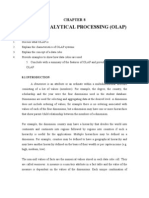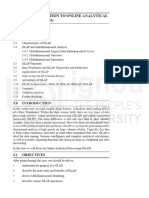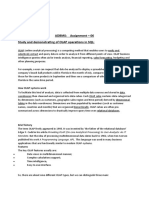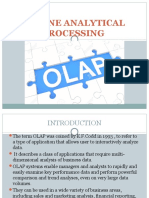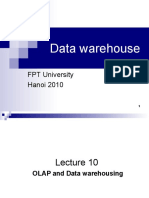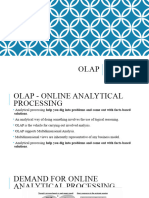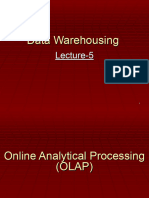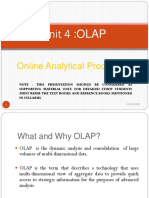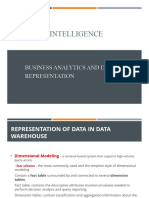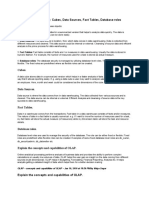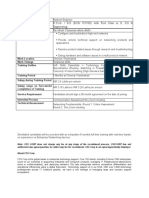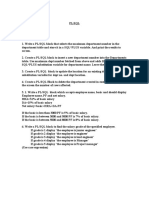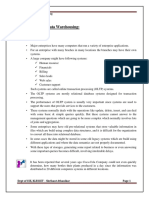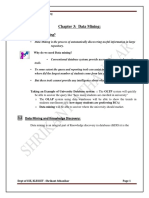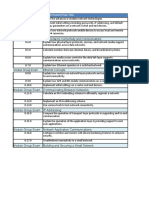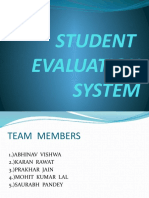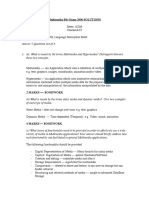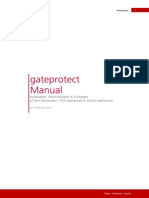0% found this document useful (0 votes)
78 views18 pagesChapter 2: Online Analytical Processing
This document discusses key concepts in online analytical processing (OLAP). It defines dimensions as attributes with ordered member values used to analyze facts. Facts are determined by dimension value combinations. Measures are the numerical values stored in data cube cells. OLAP provides fast analysis of shared, multidimensional data to support complex queries. It compares OLAP to OLTP and outlines Codd's 10 characteristics of OLAP systems, including multidimensional views, aggregation, and uniform reporting performance. Motivations for OLAP include understanding sales and costs to improve business decisions. An example shows how a multidimensional data cube can organize student data from three tables.
Uploaded by
shreyaCopyright
© © All Rights Reserved
We take content rights seriously. If you suspect this is your content, claim it here.
Available Formats
Download as PDF, TXT or read online on Scribd
0% found this document useful (0 votes)
78 views18 pagesChapter 2: Online Analytical Processing
This document discusses key concepts in online analytical processing (OLAP). It defines dimensions as attributes with ordered member values used to analyze facts. Facts are determined by dimension value combinations. Measures are the numerical values stored in data cube cells. OLAP provides fast analysis of shared, multidimensional data to support complex queries. It compares OLAP to OLTP and outlines Codd's 10 characteristics of OLAP systems, including multidimensional views, aggregation, and uniform reporting performance. Motivations for OLAP include understanding sales and costs to improve business decisions. An example shows how a multidimensional data cube can organize student data from three tables.
Uploaded by
shreyaCopyright
© © All Rights Reserved
We take content rights seriously. If you suspect this is your content, claim it here.
Available Formats
Download as PDF, TXT or read online on Scribd
/ 18



